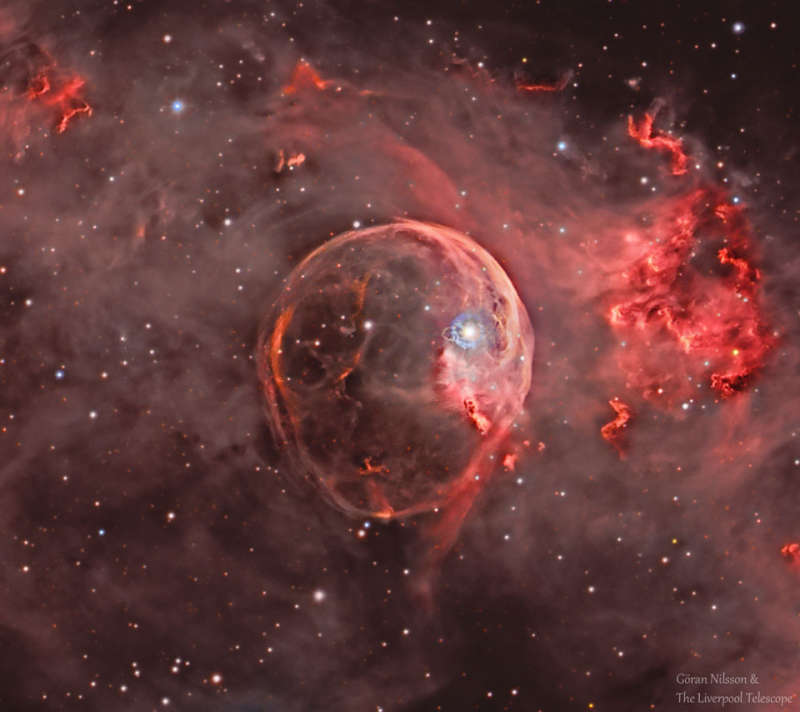
|
Credit & Copyright: GĂran Nilsson &
The Liverpool Telescope
Explanation:
It's the bubble versus the cloud.
NGC 7635, the
Bubble Nebula,
is being pushed out by the
stellar wind
of massive star
BD+602522, visible in blue toward the right, inside the nebula.
Next door, though, lives a giant
molecular cloud,
visible to the far right in red.
At this place in space, an
irresistible force meets an
immovable object in an
interesting way.
The cloud is able to contain the expansion of the bubble gas,
but gets blasted by the hot radiation from the
bubble's central star.
The radiation heats up dense regions of the
molecular cloud causing it to glow.
The Bubble Nebula,
pictured here is about 10
light-years
across and part of a much
larger complex of stars and shells.
The Bubble Nebula
can be seen with a small telescope towards the
constellation of the Queen of
Aethiopia (Cassiopeia).
|
January February March April May June July August September October November December |
| ||||||||||||||||||||||||||||||||||||||||||||||||
NASA Web Site Statements, Warnings, and Disclaimers
NASA Official: Jay Norris. Specific rights apply.
A service of: LHEA at NASA / GSFC
& Michigan Tech. U.
Based on Astronomy Picture
Of the Day
Publications with keywords: Bubble nebula - NGC 7635 - molecular cloud
Publications with words: Bubble nebula - NGC 7635 - molecular cloud
See also:
